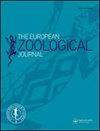Cosmopolitism, rareness and endemism in deep-sea marine nematodes
IF 1.4
4区 生物学
Q2 ZOOLOGY
引用次数: 3
Abstract
Abstract Nematodes represent the most abundant benthic metazoan of all seas and oceans, and their relative importance increases with increasing water depth. Understanding the biodiversity patterns of this dominant phylum could be a critical step towards our comprehension of the evolutionary patterns across the largest biome of the biosphere. For instance, it has been assumed for a long time that nematodes are ubiquitous across depths, latitudes and biogeographic regions, but there is still little scientific evidence for this lack of endemism. The present study is based on a meta-analysis of nematode biodiversity data collected from 246 deep-sea sites of the Atlantic Ocean and Mediterranean Sea. We explored the cosmopolitanism, rareness and potential endemism of nematode genera in deep-sea sediments. The results of this analysis indicate that only one-third of nematode families are widely distributed and could potentially be cosmopolitan, whereas 94% of the nematode genera are linked to specific habitats or bathymetric ranges. Singleton nematode genera (i.e. genera presenting as a single individual only in one specific habitat) increased in importance with increasing water depth. We conclude that rareness and endemism may be a far more common feature than previously thought in deep-sea nematode assemblages and hypothesise that the deep ocean interior could be a huge reservoir of endemic nematode species.深海线虫的世界主义、稀有性和地方性
摘要线虫是所有海洋中数量最多的底栖后生动物,其相对重要性随着水深的增加而增加。了解这个优势门的生物多样性模式可能是我们理解生物圈最大生物群落进化模式的关键一步。例如,长期以来,人们一直认为线虫在深度、纬度和生物地理区域普遍存在,但仍然很少有科学证据表明这种缺乏地方性。本研究基于对从大西洋和地中海246个深海地点收集的线虫生物多样性数据的荟萃分析。我们探索了深海沉积物中线虫属的世界主义、稀有性和潜在的特有性。这项分析的结果表明,只有三分之一的线虫科分布广泛,可能是世界性的,而94%的线虫属与特定的栖息地或水深范围有关。Singleton线虫属(即仅在一个特定栖息地作为单个个体出现的属)的重要性随着水深的增加而增加。我们得出的结论是,在深海线虫群落中,稀有性和地方性可能是比以前认为的更常见的特征,并假设深海内部可能是地方性线虫物种的巨大宿主。
本文章由计算机程序翻译,如有差异,请以英文原文为准。
求助全文
约1分钟内获得全文
求助全文
来源期刊

European Zoological Journal
Agricultural and Biological Sciences-Animal Science and Zoology
CiteScore
3.10
自引率
5.60%
发文量
80
审稿时长
30 weeks
期刊介绍:
The European Zoological Journal (previously Italian Journal of Zoology) is an open access journal devoted to the study of all aspects of basic, comparative and applied protozoan and animal biology at molecular, cellular, tissue, organ, organismal, population, and community-ecosystem level. Papers covering multiple levels of organization and integrative approaches to study animal form, function, development, ecology, evolution and systematics are welcome. First established in 1930 under the name of Il Bollettino di Zoologia, the journal now has an international focus, reflected through its global editorial board, and wide author and readership.
 求助内容:
求助内容: 应助结果提醒方式:
应助结果提醒方式:


